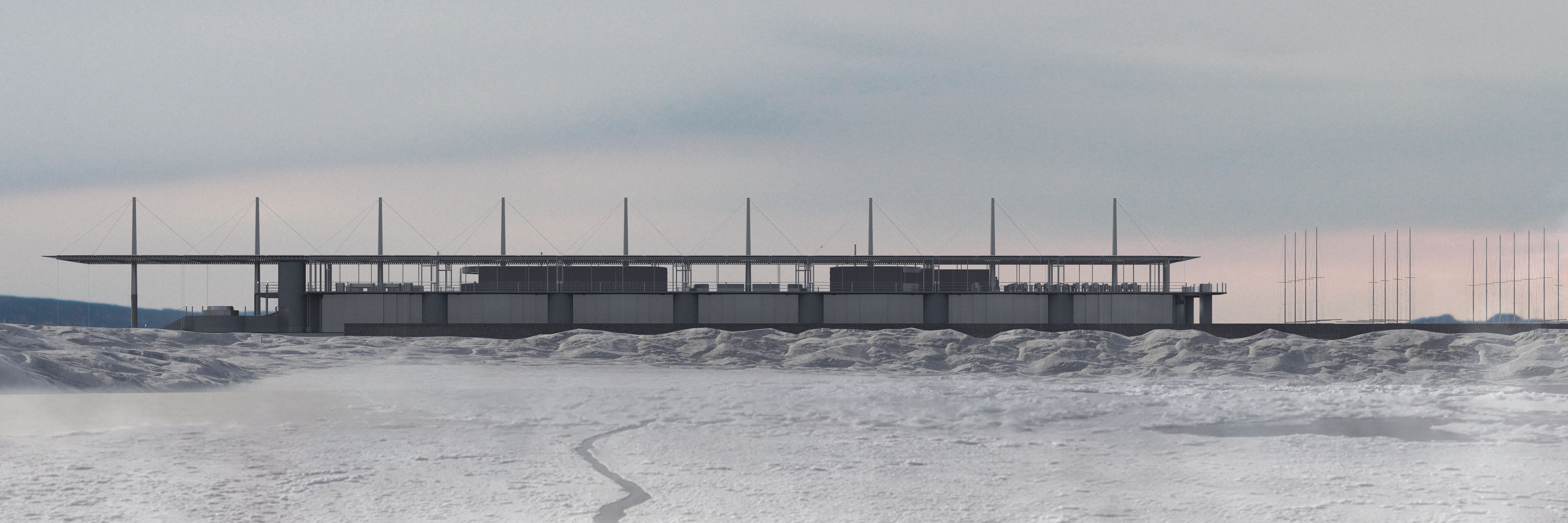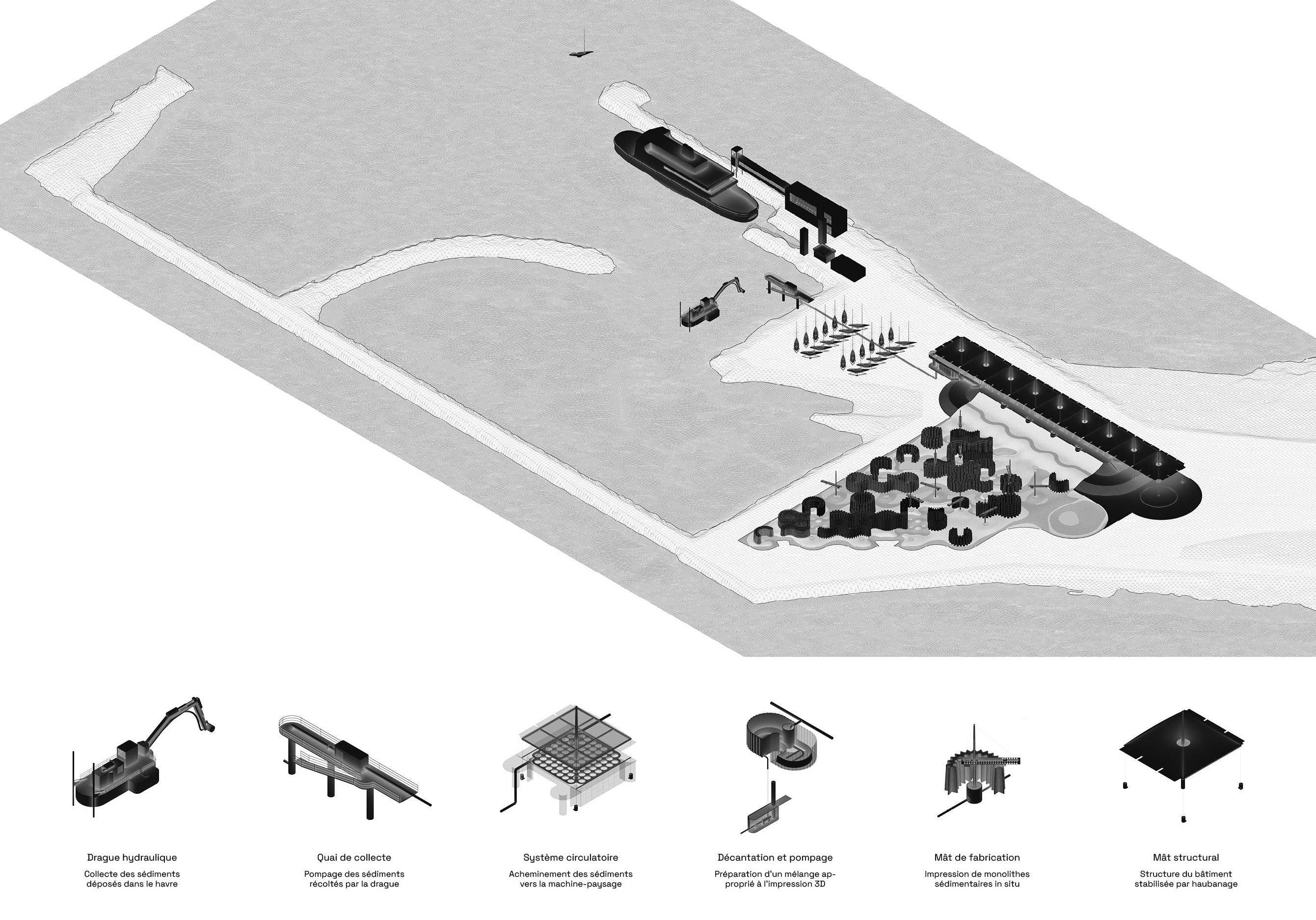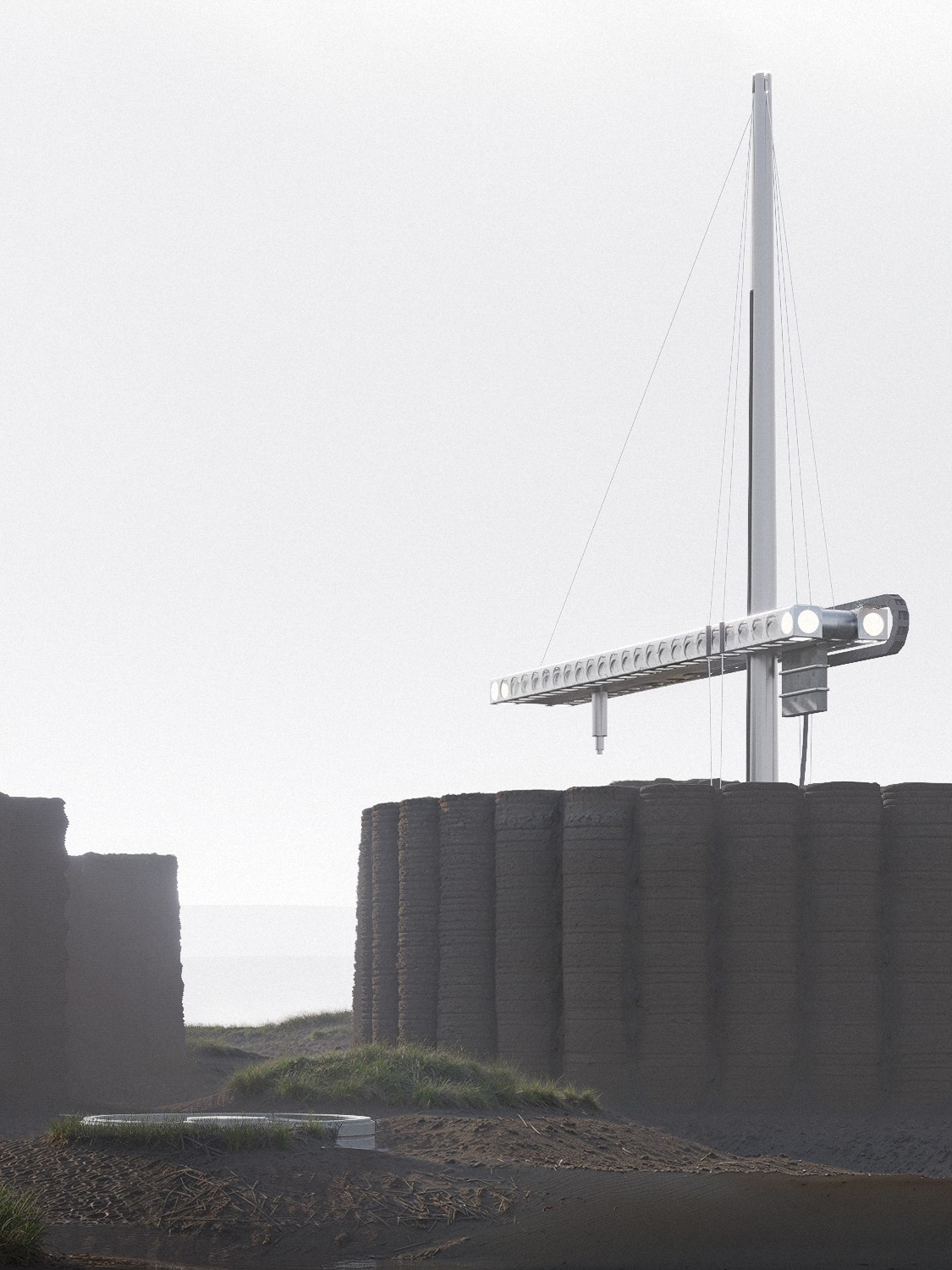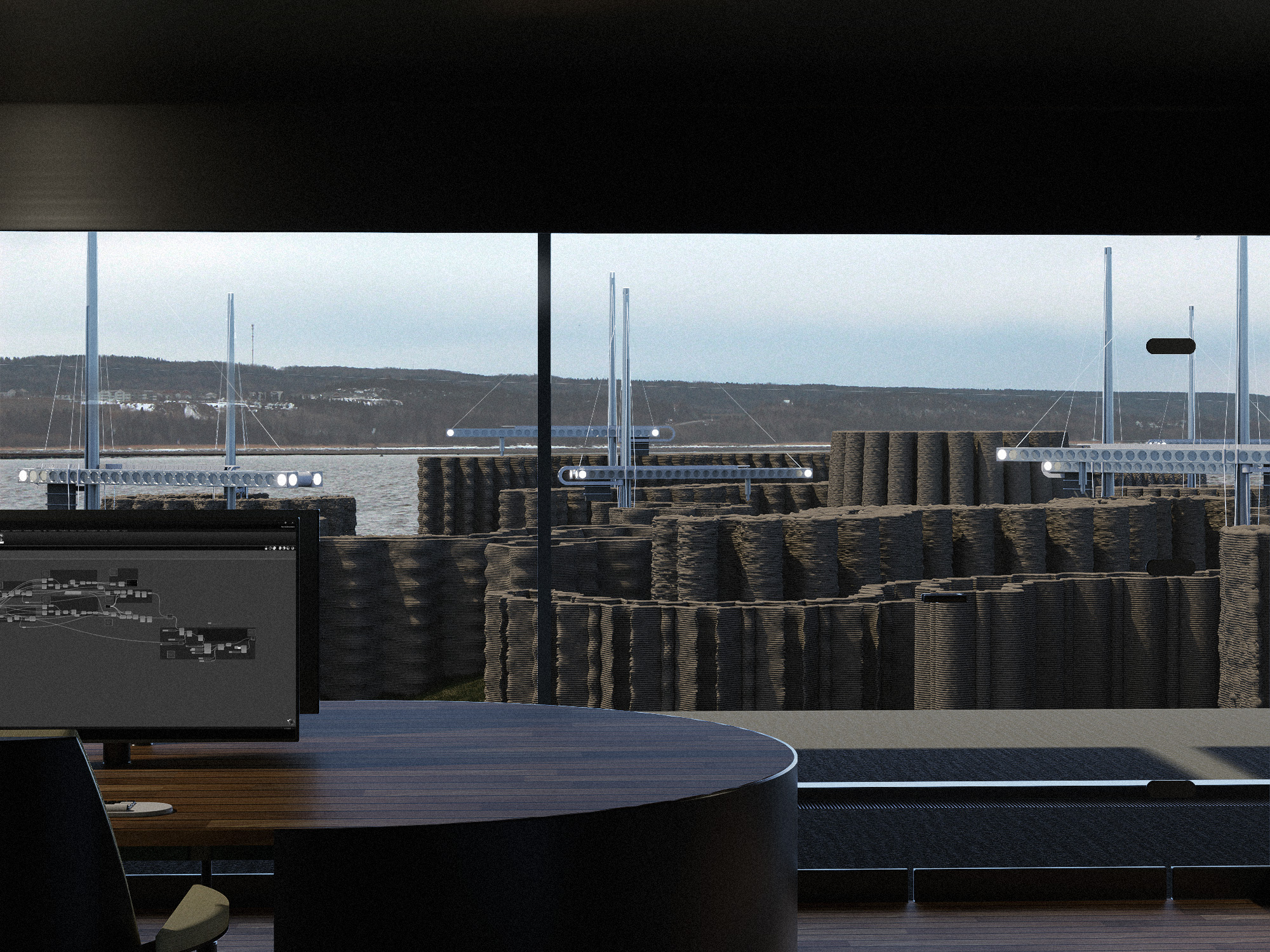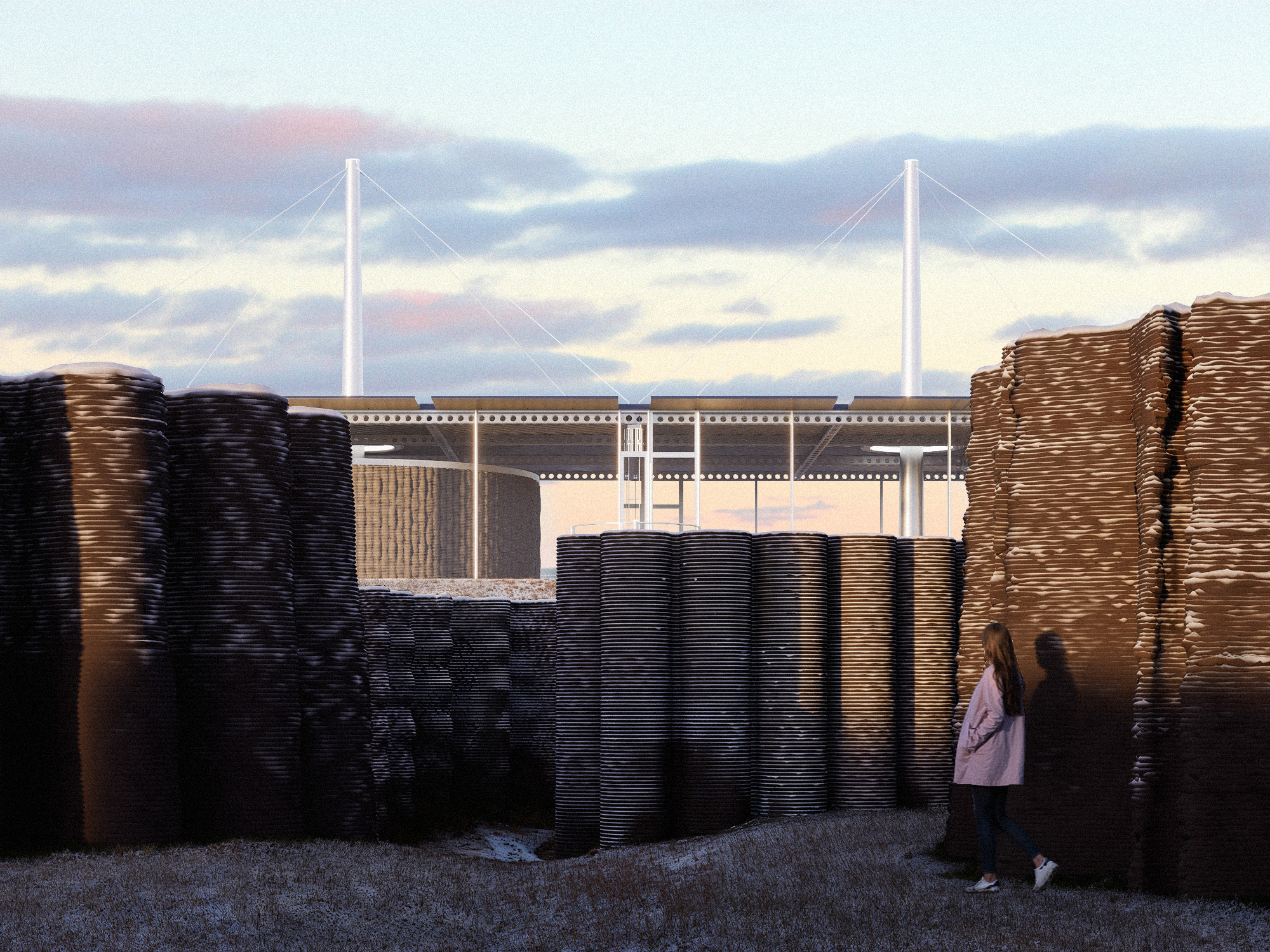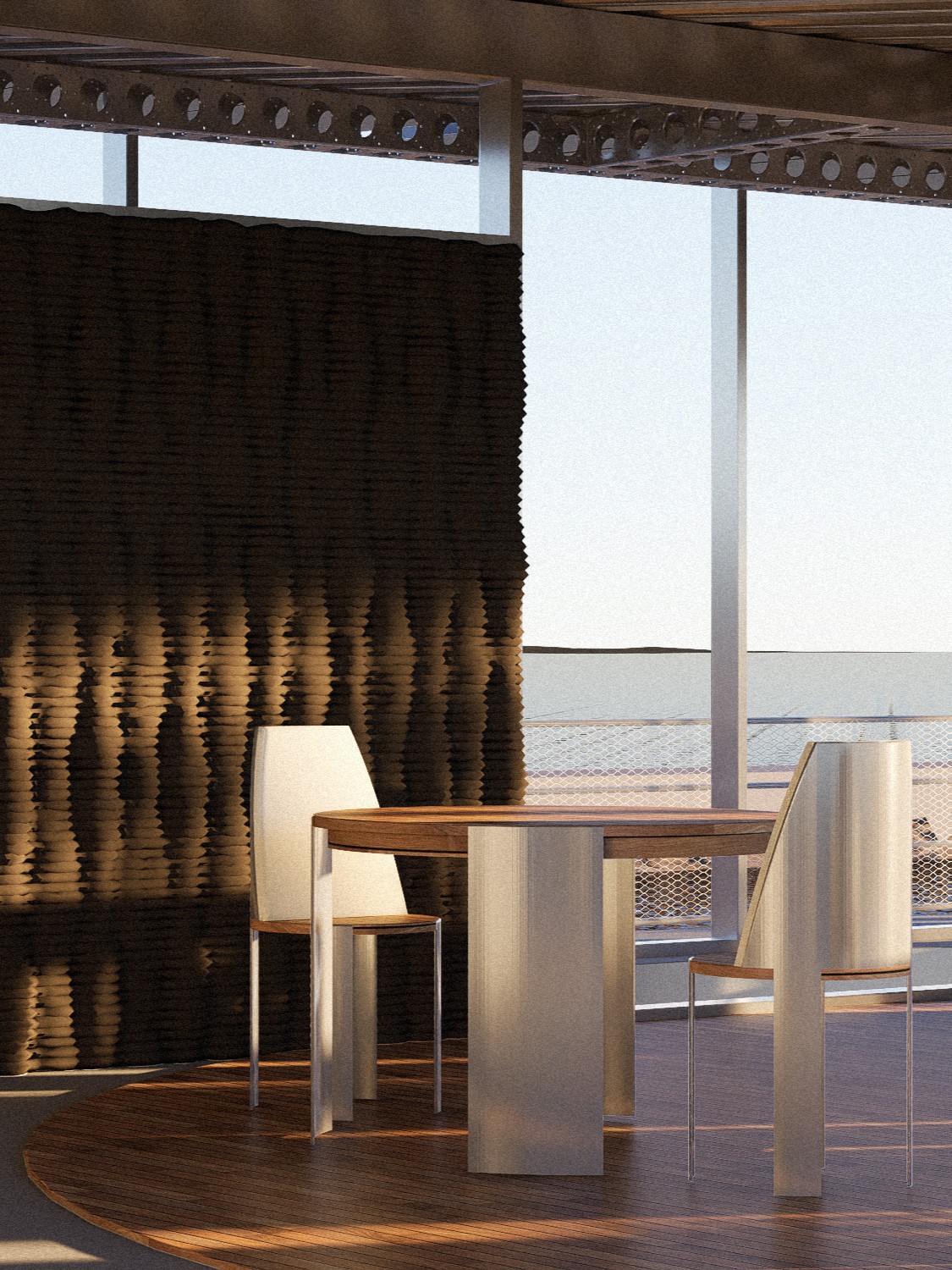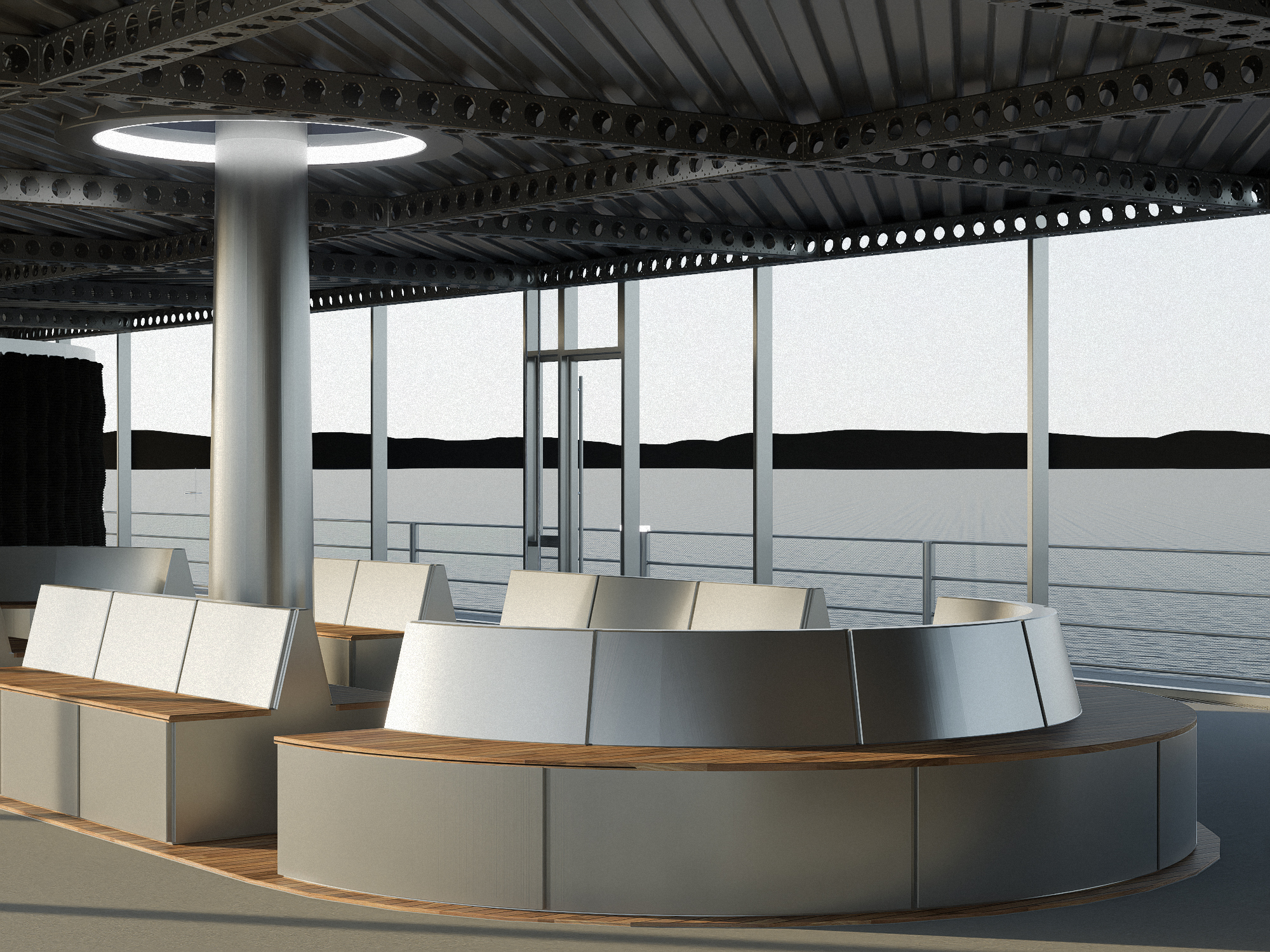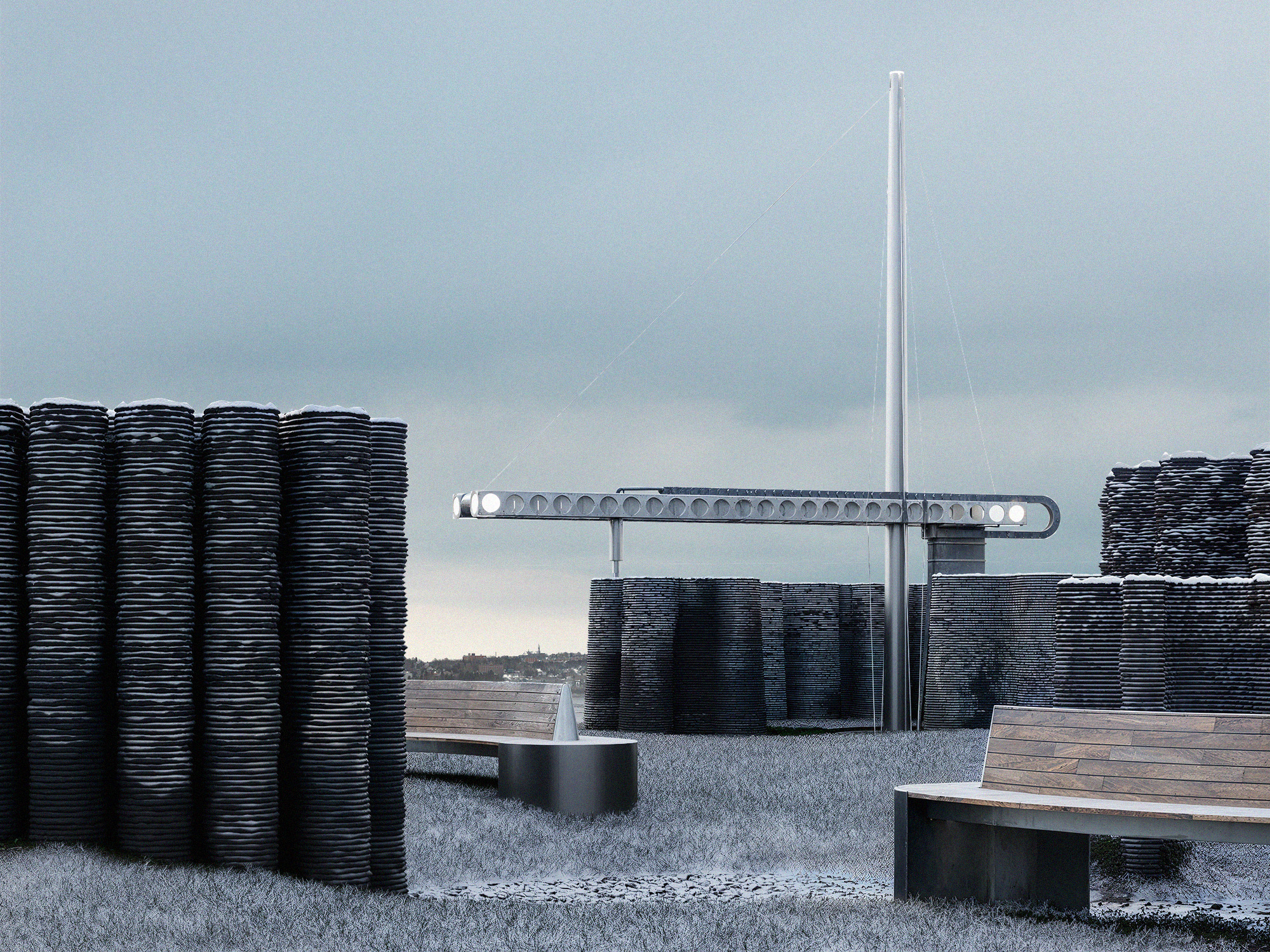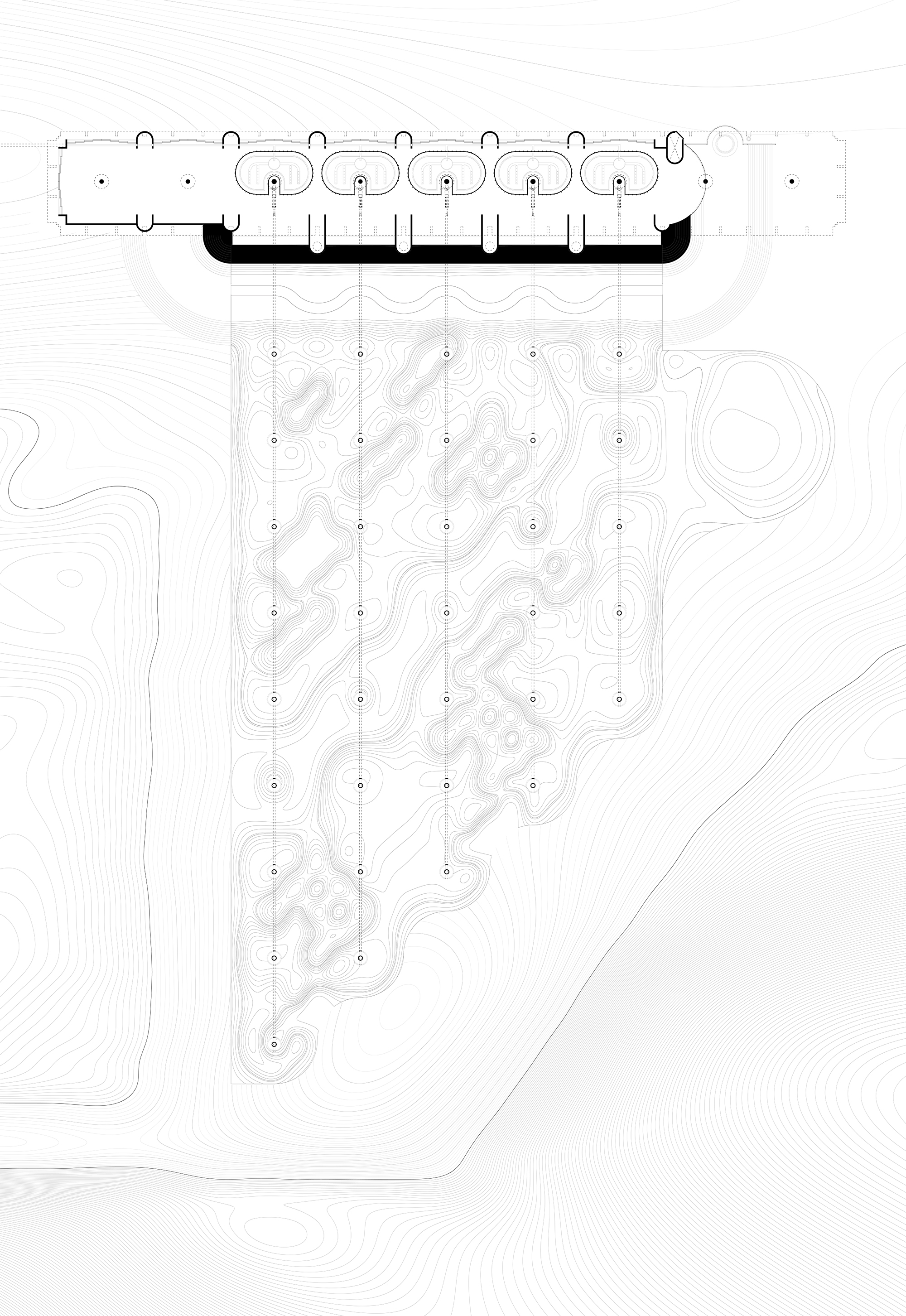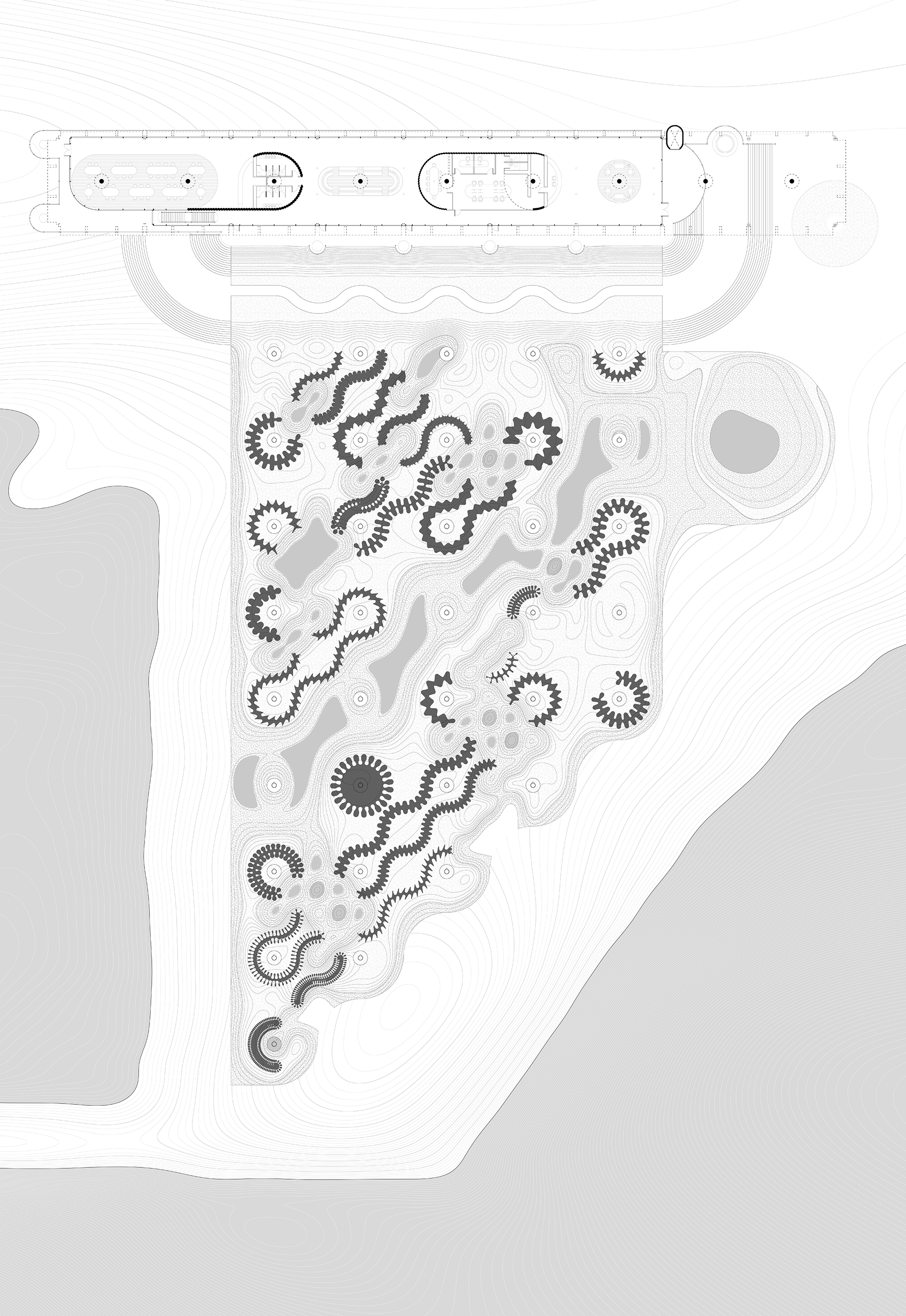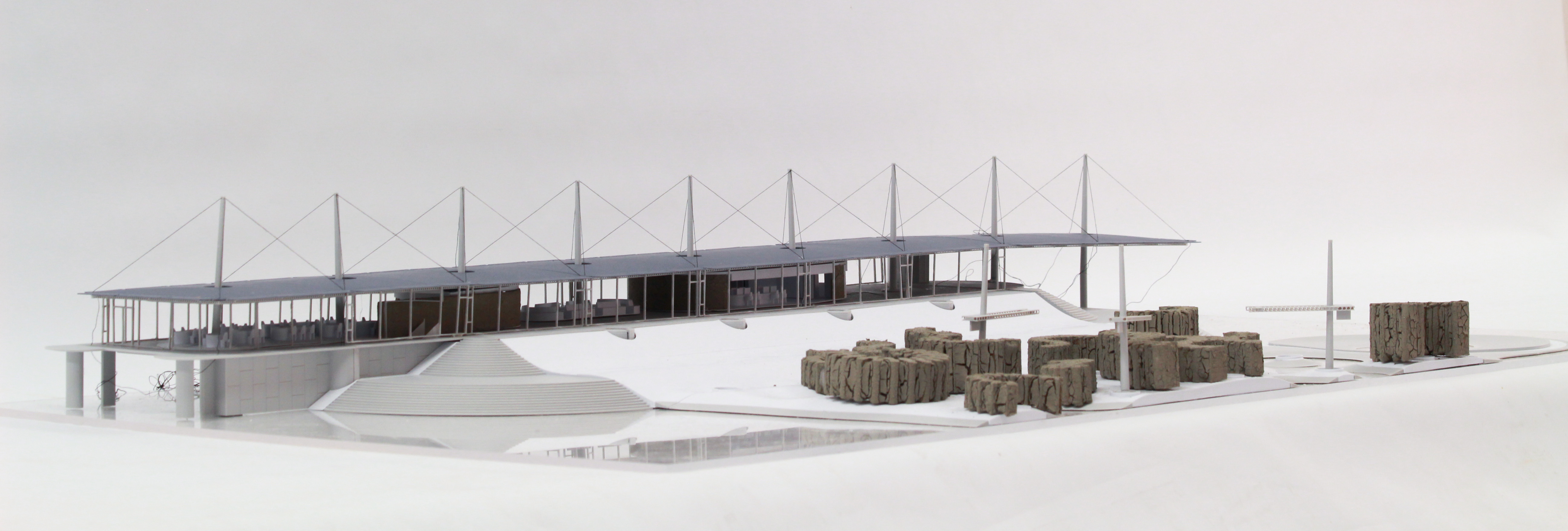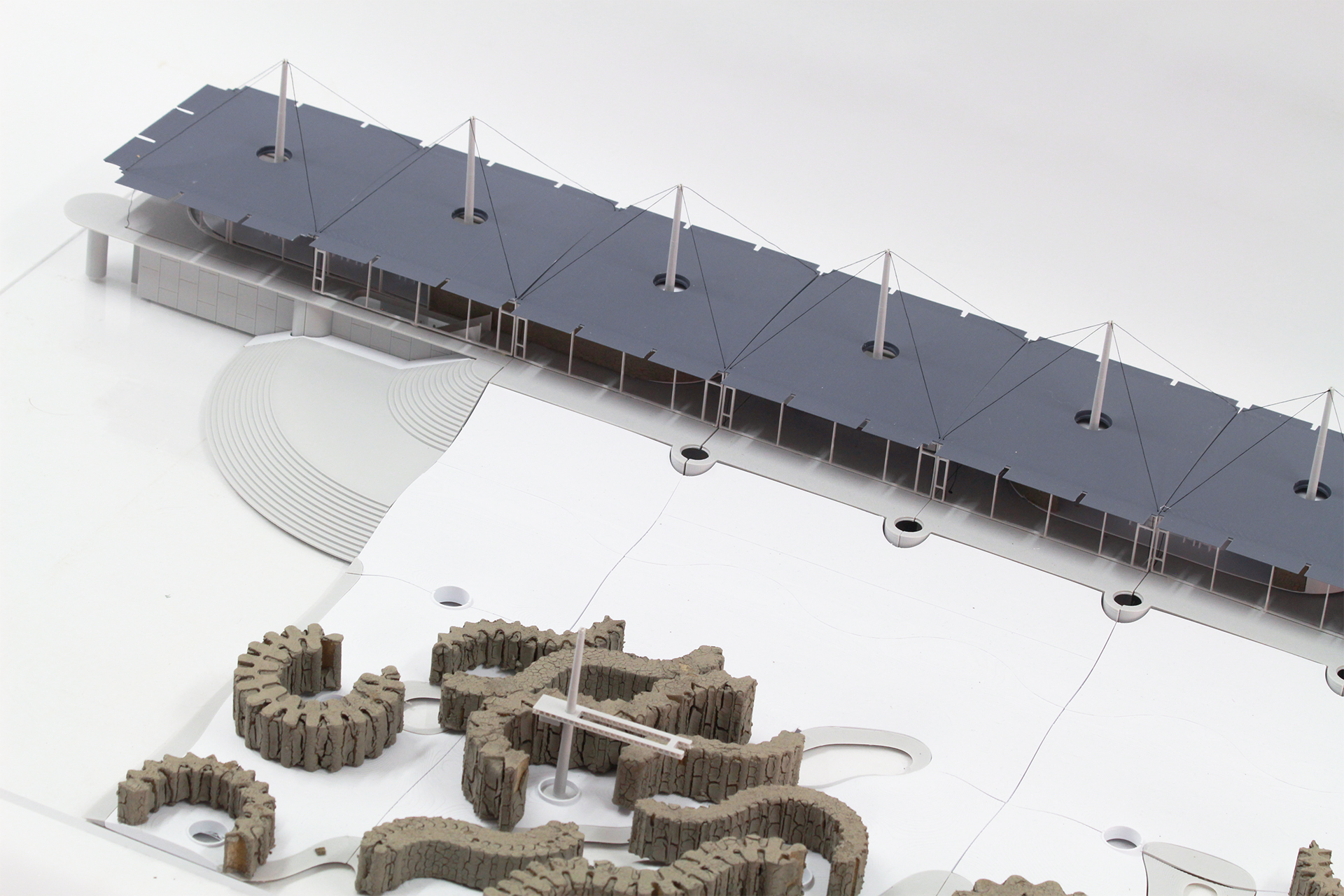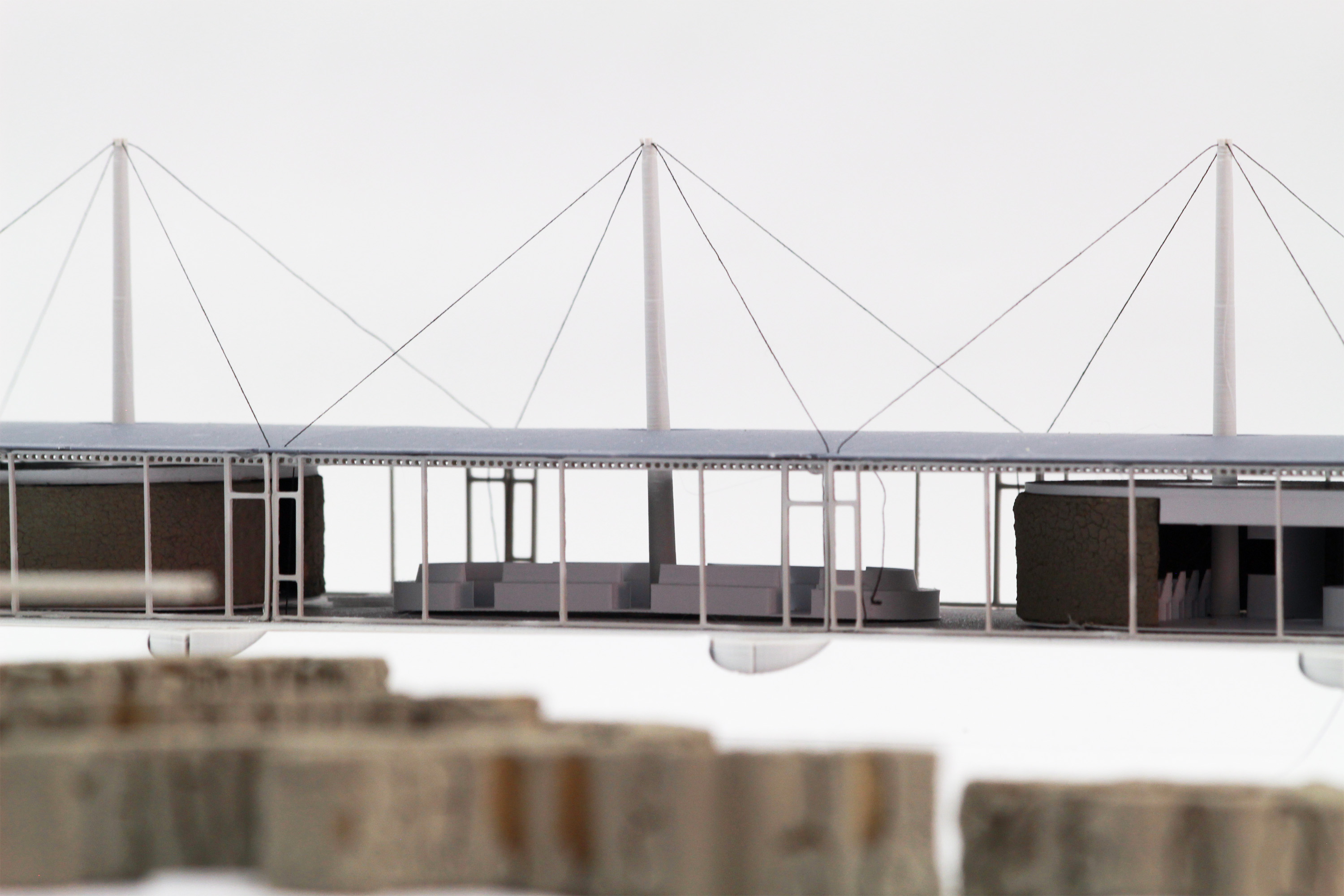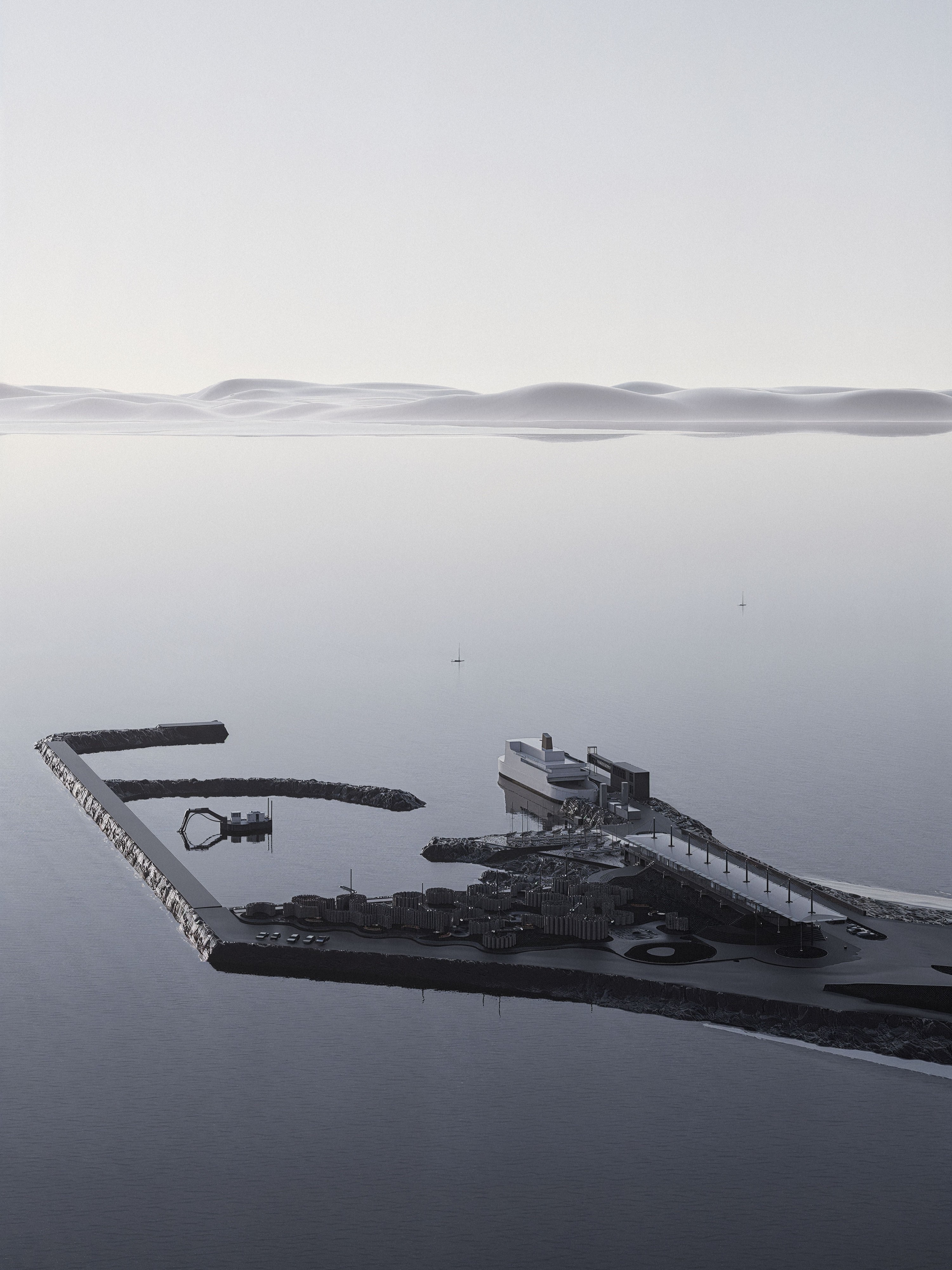
Terre à tribord
Halte maritime et machine-paysage à Rivière-du-Loup
Essai-projet de fin d'études en architecture
Supervisé par Samuel Bernier-Lavigne
Candidature au Prix de Rome - début de carrière
Candidature au Norman Foster Traveling Scholarship
Récipiendaire du prix Enclume 2025 - développement et mise en valeur du territoire
Récipiendaire du prix Matérialité et matériaux - BGLA architecture
L’essai-projet s’intéresse à la terre comme matériau remanié, déplacé, réorganisé à l’échelle territoriale. Cette matière millénaire rencontre aujourd’hui l’outil numérique pour créer des spatialités éphémères et évolutives, à la fois issues du site et résultat des forces géologiques et anthropiques. La terre reprend ainsi sa place au sein d’une architecture circulaire, à la fois consciente du passé et tournée vers l’avenir.
Maritime haven and landscape machine in Rivière-du-Loup
Architecture masters thesis project
Candidate to the Prix de Rome - Emerging Practitioners
Candidate to the Norman Foster Traveling Scholarship
Recipient of the Enclume 2025 award - territorial development and valorisation
Recipient of the Matérialité et matériaux award - BGLA architecture
The thesis project focuses on earth as a material that is reworked, relocated, and reorganized at a territorial scale. This ancient matter now meets digital tools to create ephemeral and evolving spatialities, both derived from the site and shaped by geological and human forces. Earth thus reclaims its place within a circular architecture that is both mindful of the past and oriented toward the future.

